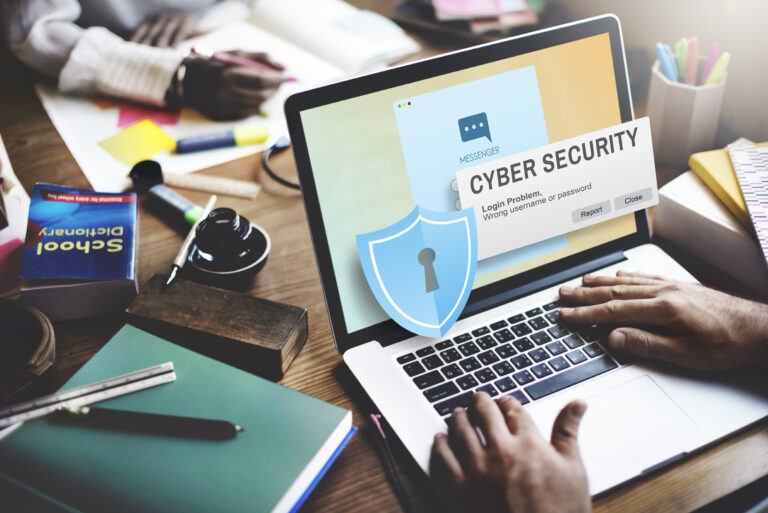Passwords & Privacy: Teaching Students to be Proactive in Protecting their Information

The Importance of Password Security
Did you know over 24 billion passwords were exposed by hackers in 2022? That’s nearly three passwords for every person on the planet. Despite this, two-thirds of Americans admit to using the same password across multiple accounts, leaving their personal information highly vulnerable to data breaches. Sadly, it makes sense that over 80% of confirmed data breaches are tied to stolen, weak, or reused passwords.
Weak or reused passwords are like leaving the front door to your digital life unlocked, if not wide open. Hackers rely on stolen or weak credentials to gain access to valuable personal information for identity theft, financial gain, or control. For young learners, the stakes are just as high. A compromised school account can lead to lost work, privacy violations, or even harassment and bullying[1] .
Passwords act as the gatekeepers to our most sensitive digital information, and students need to learn how to protect these precious pieces of information. In today’s interconnected world, passwords protect nearly every aspect of our lives – social media accounts, schoolwork, personal photos, private files, and financial information. Yet many people, including students, underestimate how essential it is to create and maintain strong passwords.
However, educators are in the position to positively influence password and privacy habits. By teaching students how to create strong, unique passwords and keep them secure, educators empower them to take ownership of their online safety. This not only protects important personal accounts but also builds critical digital citizenship skills that students will carry into adulthood. Read on for practical tips and engaging activities that will help you teach your students the importance of strong passwords and proactive privacy habits.
5 Tips for Teaching Password Security in the Classroom
Helping students understand password security doesn’t have to be complicated. With engaging activities and practical advice, like those included in the Taito Learning Digital Citizenship curriculum, you can equip your students with the skills they need to stay safe online. Here are five tips to get started:
- Explain what makes a strong password. Start with the basics – a strong password should:
- be at least 12 characters long
- include a mix of uppercase and lowercase letters, numbers, and special characters.
- be long, as longer passwords are harder to crack.
Post these password basics on a visual in your classroom and have students refer to it when signing into individual accounts. Ask them to compare their passwords against each criterion.
- Highlight the risks of reusing passwords. Help students understand why using the same password across multiple accounts is risky. Explain that if one account is hacked, all other accounts with the same password are vulnerable. Share real-world examples of breaches, like the data provided in this post, to underscore this point.
- Teach students how to create memorable passwords. Students often struggle to create unique passwords they can remember. Introduce them to techniques like passphrases (i.e., strings of random words) or acronyms based on personal interests, like “MyDogLoves4Walks!” Passwords using this trick strike a balance between strength and memorability.
- Encourage regular password updates and make updating passwords a habit. Teach students to set reminders or tie password changes to significant events, like the start of a new school semester. Reinforce the importance of replacing passwords immediately after any suspected breach.
- Role-play scenarios and practice. Engage students in an activity where they analyze password strength. Provide sample passwords and ask them to identify which are weak or strong and why. For hands-on practice, have them create posters illustrating characteristics of good passwords to share with their peers.
By incorporating these tips into your lessons and your day-to-day classroom routines, you’re not just teaching password security – you’re fostering proactive digital citizenship. These lessons will empower students to take control of their online safety now and in the future.
Building Privacy Awareness
Privacy isn’t just about keeping passwords secure – it’s about understanding how personal information is shared and used online. For students, building privacy awareness is a critical step in protecting their digital identities. Here’s how you can help them develop this essential skill:
- Explain what “personal information” is. Start by defining personal information – names, addresses, phone numbers, birthdates, and passwords fall into this category. Explain how these pieces of information can be used to identify or target someone online.
- Discuss the risks of oversharing. Today’s students practically live online and share updates on their personal lives constantly on social media. Help students understand that oversharing on social media or other platforms can make them vulnerable to scams, cyberbullying, or identity theft. Share examples of how information shared online – such as posting a vacation photo – can unintentionally reveal sensitive details.
- Introduce privacy settings. Show students how to use privacy settings on popular platforms to limit who can see their information. Walk them through adjusting these settings to ensure only trusted people have access.
- Teach students to recognize phishing attempts. Teach students to question unsolicited messages, avoid clicking unknown links, and never share passwords or personal information without verifying the request’s legitimacy. Use real-world examples of phishing emails for practice.
- Emphasize the long-term impact of online choices. Reinforce the concept of a digital footprint. Explain that what students share online can remain there indefinitely and could affect future opportunities, from college admissions to job applications.
By building privacy awareness along with other essential digital citizenship skills, you empower students to take control of their digital lives. These lessons not only protect them now but also teach them to navigate the online world with confidence and responsibility.
Empowering Students to Protect Their Information with Taito Learning
Teaching students about password security and privacy awareness isn’t just a lesson in digital citizenship – it’s a lifelong skill that equips them to navigate an increasingly connected world with confidence. By understanding the importance of strong passwords, recognizing the risks of oversharing, and safeguarding their personal information, students become proactive participants in their own digital safety.
For educators, finding effective ways to introduce these concepts can feel daunting, but you don’t have to go it alone. Taito Learning’s Digital Citizenship curriculum provides ready-to-use lessons, activities, and resources to help you teach these critical skills. From engaging password protection exercises to discussions on digital footprints, our curriculum equips you to foster safer, smarter online habits in your classroom.
Pilot a 60-day free trial of the Digital Citizenship Curriculum, featuring TypeTastic, our engaging keyboarding program for K-5 students. See the quality of the content you’ll experience by previewing three full lessons targeting digital citizenship, digital literacy, and computer science. Discover how Taito Learning can help foster a school environment where respect and responsibility thrive in the digital age. Let’s work together to empower students to navigate the online world with confidence and compassion.


